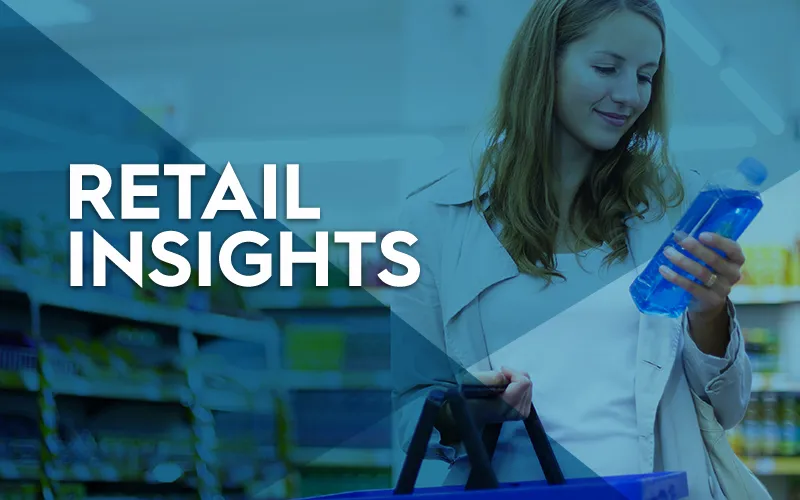Walmart is Dominating Amazon in Grocery Sales and is Poised for Continued Growth
Walmart is making significant strides in online sales and has…
We are based in historic Annapolis, Maryland, but our team is nationwide. Contact us today to learn how we can help amplify your brand.
Walmart is making significant strides in online sales and has…
Compass team leaders weigh in on what it means to…
More and more Americans are using generative AI tools in…

It has become cliché to say that the past year has greatly accelerated existing trends in retail. The COVID-19 pandemic has spurred greater adoption of eCommerce among consumers. From stay-at-home orders and social distancing guidelines to consumers stockpiling essential goods—many consumers have turned to online retailers. Even during these unprecedented times however, in-store shopping remains essential. But to succeed in our ”new normal” in-store retailers will need to adapt and stand out.
In this article, we asked the Compass Marketing channel experts, Aaron Brooks and Kevin Nemetz, to share their insights. They predict some of the key retail trends they expect to see in stores in the coming months and years, as well as how they think both brands and retailers can succeed moving forward.
The economic effects of the pandemic are still being felt and will likely be experienced for a long time to come. At the same time, many consumer goods manufacturers are experiencing price increases and raising concerns about inflation. Given these conditions, we predict private label and store brands will grow in importance and it is imperative for retailers to manage the price gap between branded products and store brands. There is a critical need for optimizing the price gap and analytics will play a significant role in providing pricing management. If consumers see prices increasing across most goods, it is likely that they will fill a greater share of their carts with private label products. To stay competitive, retailers and brands will need to ensure they understand the marketplace, consumers and the shelf price sensitivity.
One thing that has become apparent recently—especially as stores have seen less foot traffic—is the sheer size of many stores. As consumer shopping habits continue to change, shelf space is losing its importance. While we do not expect supermarkets or even big box stores to completely disappear, we do predict that stores will be become smaller and more focused. We predict this will be driven both by growing consumer adoption of pure play online or omnichannel retailers as well as the growing prominence of health-focused brands (e.g., plant-based and non-GMO) and private label products. With widespread access to nearly endless aisles only the tap of a smartphone screen away, the idea of protecting space on a retailer’s shelf may begin to make less and less sense. Similarly, retailers may begin to see greater value in giving their store brands more space and visibility on the shelf since they can make greater margins on their products. Brands may also focus more of their consumer spending on vehicles that bypass retailers and go direct-to-consumers through social media and mobile devices. Additionally, given safety concerns, retailers will need to ensure shoppers feel safe inside stores. This may lead to stores being less densely packed with retailers instead introducing more immersive online experiences and, possibly, turning physical stores into small showrooms where people can touch and feel products.
As consumers become more aware of and interested in the products they and their families consume, we may begin to see less emphasis on broad consumer “experiences” within a large store. Instead, stores may emerge that cater to consumers’ specific preferences or more “niche services”. From the rise of keto and vegan lifestyles to the growing adoption of plant-based diets, retailers may see value in offering consumers a “one-stop shop”. Conversely, we may expect to see more “stores-within-stores” (think a Starbucks in a Target, FedEx counter in a Walgreens or Birchbox in Drug channel) in order to provide that “one-stop” broader experience.
As far as experiences, even as the economic recovery continues and life returns to a semblance of “normalcy”, retailers may be hesitant to reintroduce the same in-store experiences they offered before the pandemic. Due to lingering health and safety concerns, samples, cooking classes, and other in-store events may no longer be offered or only offered virtually. We expect this to coincide with continued efforts by retailers to provide contactless fulfillment options.
As stated before, the pandemic has forced many shoppers to change their habits. Increasingly, consumers are choosing curbside pickup or delivery. Those who continue to shop in-store are often altering their shopping habits—either buying more products with each purchase to stock up or purchasing a broader range and variety of products in each trip. To remain competitive, we expect retailers to continue to meet shoppers where they are.
Retailers will likely continue to combine and refine both in-store and online shopping offerings to attract more consumers and improve the consumer buying experience. We expect this to mean more retail space committed to order preparation and storage, essentially creating mini warehouses within stores. We also expect the boundaries to blur between different types of shopping. Instead of a consumer simply placing an order and the retailer preparing it for pick-up or delivery, we expect retailers to take steps to invite shoppers in to encourage impulse shopping.
For those consumers shopping in-store, the increase in space devoted to “auto-checkout” will continue to grow and will require even greater investment in systems and technology to not frustrate consumers and delay check outs. This change creates a unique opportunity for front-end impulse items by offering a broader selection of impulse items that may lead to greater transaction rings. Today, front-end is more than just candy, mint, gum, and magazines, it has expanded to personal care, seasonal items, and more.
It is important to remember that retail will not stop changing anytime soon. For all the changes we have seen in the past year, the entire industry is still in the middle of a massive, ongoing transition. The trends we identified in this article are important, but they represent only a small part of a much larger picture. Understanding the market, knowing who your consumers are and knowing what your consumers want has never been more important. At Compass Marketing, we take a holistic approach to retail—both in-store and online. With strategies based on data and insights, we help guide brands to success.

Aaron is currently in a leadership role at Compass Marketing. He has 25 years of experience in operational and growth-oriented consulting in large and small consulting firms.

Currently in a leadership role at Compass Marketing, Kevin has 30 years in CPG in leading strategy, sales, and analytics for Fortune 500 companies.

Nick is a copywriter at Compass Marketing with extensive experience crafting effective, sales-focused copy for a variety of CPG brands.

Keeley is a graphic designer at Compass Marketing. She helps brands tell their stories through persuasive and engaging design.
Compass Marketing can help you discover opportunities for your brand. Our account managers and eCommerce experts use a holistic approach based on data and insights to help guide brands to success. If you would like to learn more, please reach out to info@compassmarketinginc.net! We are always happy to help and would love to learn more about you and your brand.
We are dedicated to making brands more valuable by combining the very best in insights and experiences with unmatched human interaction. Our team of sales, marketing, and digital experts is dedicated to growing our clients’ market share and building brand equity. We combine art and science—pairing the personal expertise of our team with proprietary technology—to help brands grow quickly and efficiently. As an Amazon Ads partner, we can help brands realize significant growth on one of the world’s largest eCommerce retailers.
Click here and subscribe to communications and receive invitations to our impactful webinars with our industry-leading partners.
We are based in historic Annapolis, Maryland, but our team is nationwide. Contact us today to learn how we can help amplify your brand.
©Compass Marketing Inc. All rights reserved.